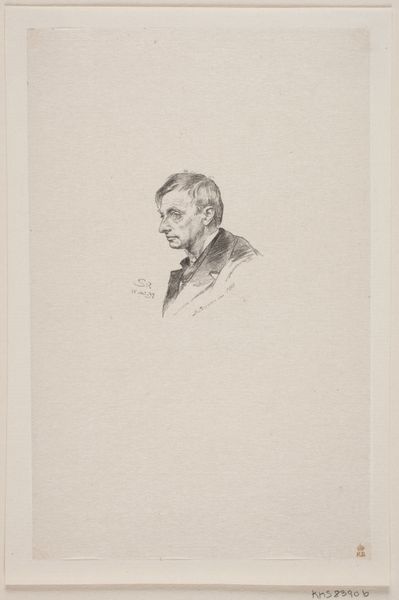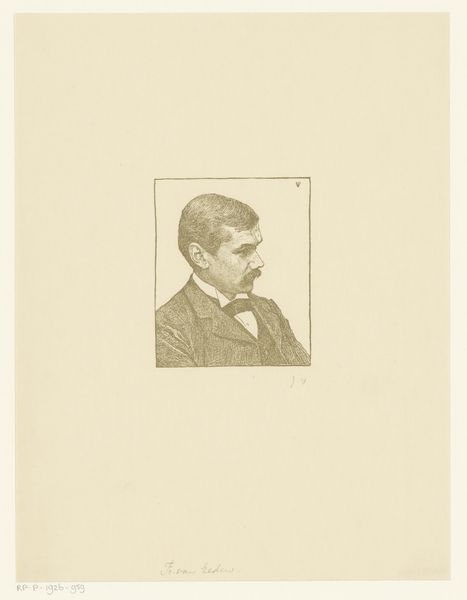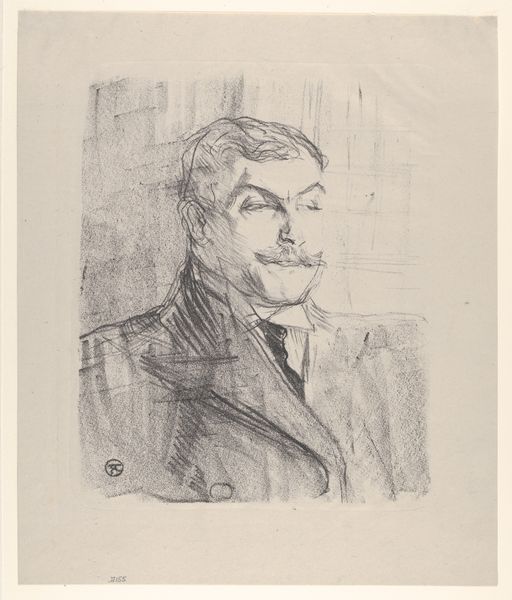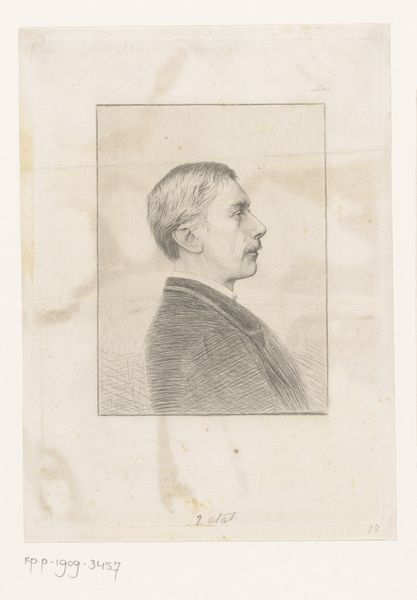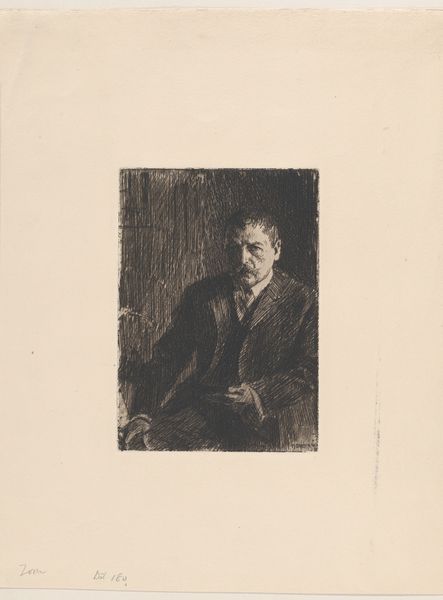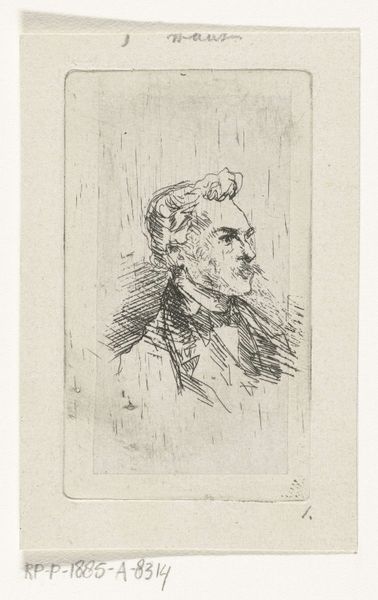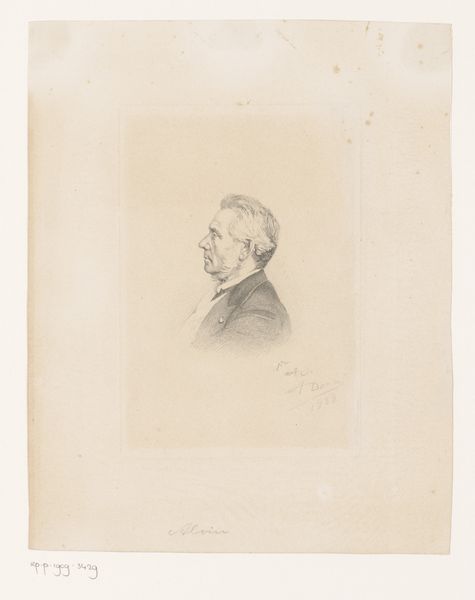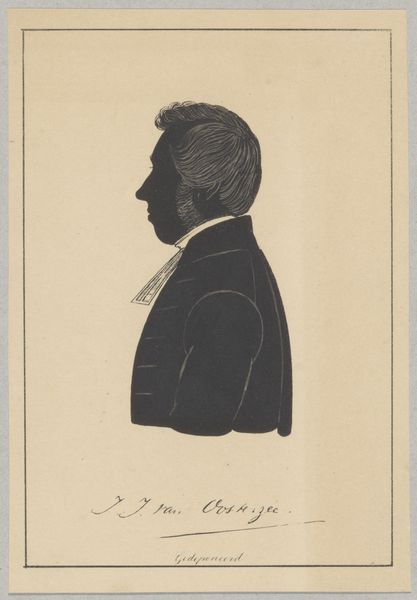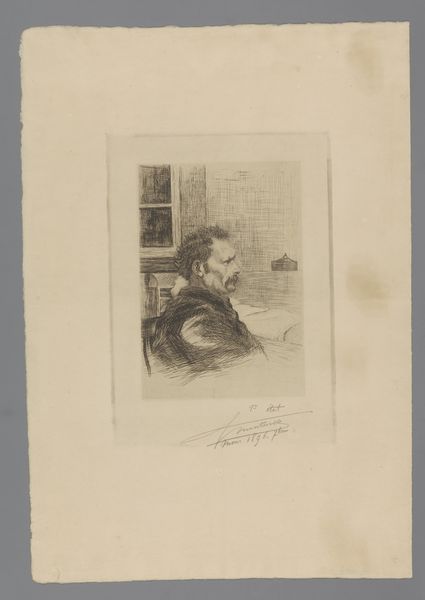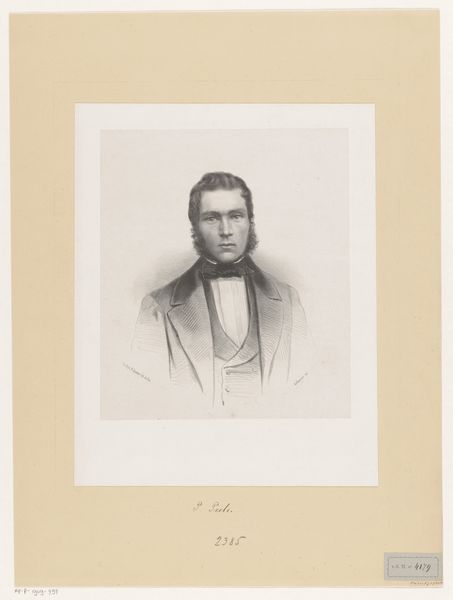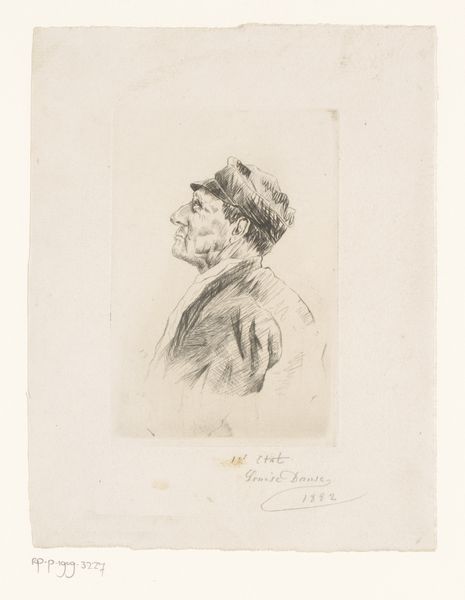
drawing, lithograph, print, charcoal
#
portrait
#
drawing
#
lithograph
# print
#
charcoal drawing
#
pencil drawing
#
romanticism
#
portrait drawing
#
charcoal
Dimensions: 285 mm (height) x 217 mm (width) (bladmaal)
Curator: Here we have a lithograph from 1842 by J.V. Gertner, a portrait of J. O. Lindam. Editor: It strikes me immediately as very controlled, almost austere, in its use of line and shadow. Very balanced. Curator: The composition is indeed meticulous. Notice the way Gertner uses hatching and cross-hatching to define form. Observe, too, the delicate use of light; it models Lindam’s face, and how the artist guides your eye across the subject. The contrast further suggests a man deep in thought, or perhaps troubled by concerns. Editor: Given the time period, that carefully cultivated image likely served a specific social function. What role did portraiture play for the bourgeoisie of that era? Was it about solidifying status or projecting a particular identity? It’s interesting to wonder what Mr. Lindam did, or wished to appear as. Curator: True, the historical context frames how we read such works. However, let us consider the intrinsic value. Gertner masterfully exploits the qualities of lithography. Look at how he obtains such variety in tonality despite the medium's limitations. Notice, too, the formal conventions of Romanticism expressed in the dramatic use of light and the detailed naturalism of the features. Editor: And thinking historically, prints and lithographs made images more accessible to a wider audience. This allowed the concept of celebrity, for example, to filter down from royalty and aristocracy. Maybe Lindam aspired to join their ranks! Curator: Perhaps, but the technical virtuosity elevates this work beyond mere likeness. Its formal arrangements demonstrate a clear, rational aesthetic. It speaks volumes on an objective plane about how art is assembled. Editor: Yet its existence and creation cannot be divorced from the social and economic contexts that fueled its production. Art does not exist in a vacuum, after all. Ultimately it is difficult to isolate the impact or original goal when our viewing context and assumptions are now quite remote. Curator: Well, for me, analyzing Gertner’s compositional choices provides more lasting insights than pondering lost motivations. Editor: For me, both methods, together, deepen our appreciation for pieces like this.
Comments
No comments
Be the first to comment and join the conversation on the ultimate creative platform.
